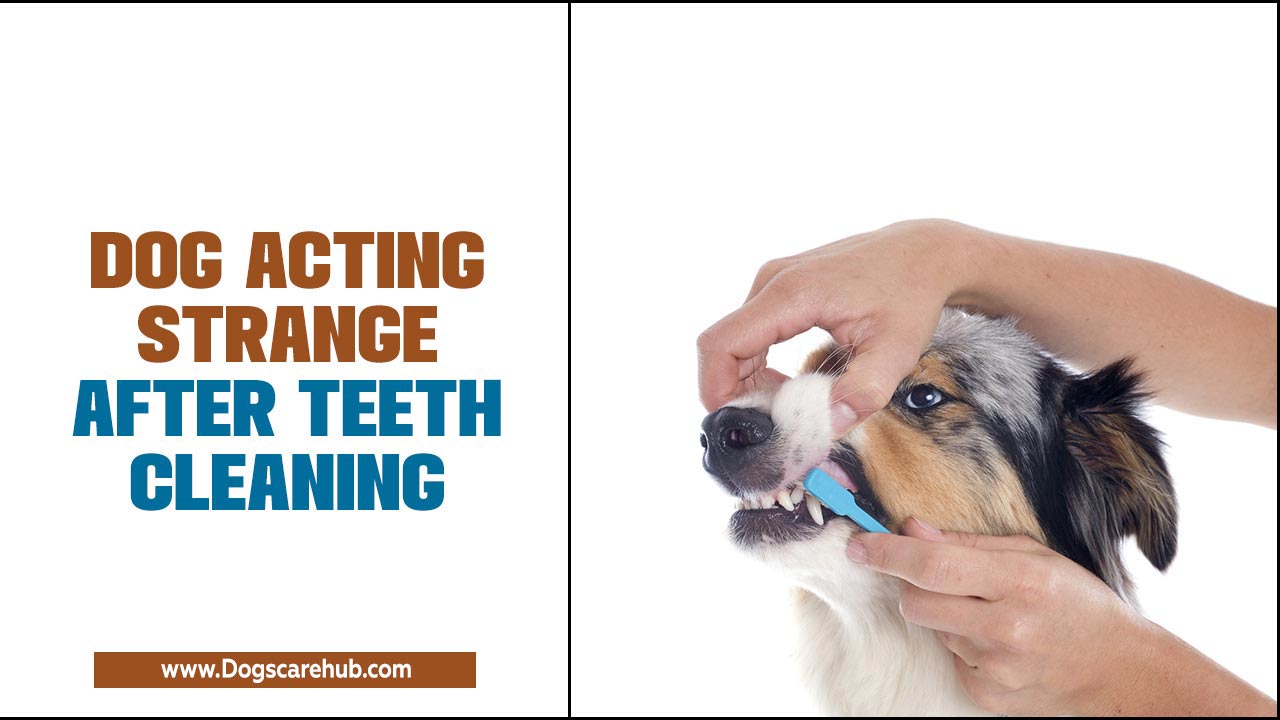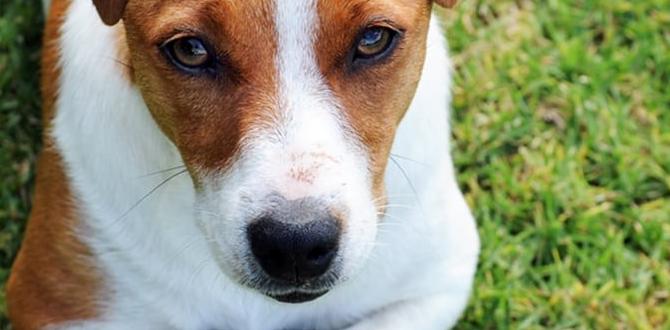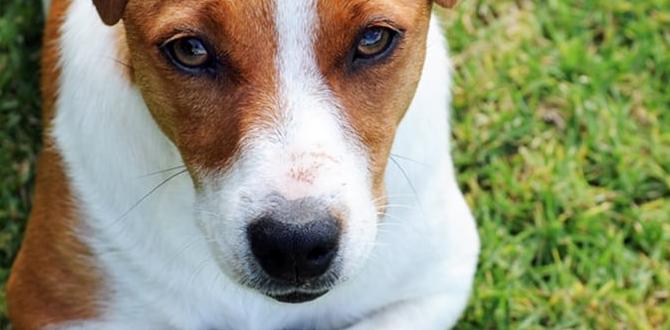Do you have a dog that growls or barks a lot? Maybe they jump up when they should sit still. Don’t worry, you’re not alone! Calming an aggressive dog can be tricky. But, with some tips and tricks, it’s easier than you think. As a beginner, you can learn how to calm your aggressive dog. Let’s explore helpful ways to make your furry friend peaceful and happy.
Key Takeaways
- Start training early for better results with aggressive dogs.
- Understand the dog’s behavior to provide the best care.
- Calm aggressive dogs with consistent routines and patience.
- Use positive reinforcement to encourage good behavior.
- Seek professional help if challenges persist.
Understanding Aggressive Dog Behavior
Understanding why dogs act aggressively is important. Some dogs may bark, growl, or snap. This can happen when they feel scared or threatened. Dogs can’t tell us their feelings, so we must watch their behavior. When a dog feels unsafe, it may act out. As a beginner, knowing the signs can help you calm an aggressive dog. Start by observing when your dog gets upset. Pay attention to their triggers. These can be loud noises, strangers, or other animals. Once you know the cause, you can help make them feel safe.
- Learn dog body language.
- Notice if the dog is uncomfortable.
- Check if there’s a consistent trigger.
- Watch for warning signs like growling.
- Address anxiety or fear in dogs.
By understanding your dog’s behavior, you can help them better. You can create a safe space for them. Sometimes, small changes like removing a noise or creating a quiet space help. If your dog is calm, you will feel more relaxed too. Remember, patience is key. Calm aggressive dogs by understanding their needs.
Fun Fact: Dogs wag tails to show feelings, but not always happiness!
Why Do Dogs Get Aggressive?
Have you ever wondered why some dogs get aggressive? Dogs can be aggressive for many reasons. Fear is a common cause. Imagine if you were in a big, noisy place. You might feel scared or uneasy too. Dogs also feel like that. Sometimes, a past experience scares them. Other times, they might be protecting their home or food. Recognizing these reasons can help you calm an aggressive dog.
Recognizing Early Signs
It’s important to spot early signs of aggression. By doing so, you can stop problems before they get big. Dogs have different ways to show they’re upset. Some might growl, while others show stiff body language. Pay attention to these signals. Just like how you might frown or sigh when upset, dogs have their own ways to communicate.
Common Triggers for Dogs
What makes dogs aggressive? Triggers can be things like loud noises, unfamiliar people, or new places. Imagine hearing a loud bang. Wouldn’t that startle you? Dogs feel the same. When you recognize what triggers your dog, you can help prevent aggression. Think about what might cause stress and try to avoid it. This way, your dog stays calm and happy.
How to Calm Aggressive Dog for Beginners
If you’re new to calming aggressive dogs, don’t worry! Begin by creating a calm environment. Don’t shout or use harsh words. Dogs respond well to calm, gentle voices. When your dog stays calm, reward them with treats or affection. This positive reinforcement encourages them to stay peaceful. It might take time, but with patience, your dog will improve. Try to understand their needs and be consistent in your approach. Routine helps dogs feel secure. Consistency builds trust and helps them learn what you expect.
- Keep calm and use gentle tones.
- Offer rewards for good behavior.
- Stick to a routine daily.
- Use toys and games for positive engagement.
- Never force interactions with other animals.
As a beginner, practice these steps regularly. The more you do, the better your dog will respond. Remember, patience and understanding are essential. Every dog learns at its own pace. Celebrate little victories along the way. Soon enough, your dog will be calmer and less aggressive.
Fun Fact: Dogs have been our companions for over 14,000 years!
Steps to Create a Peaceful Environment
Creating a peaceful environment for your dog is crucial. Begin by analyzing your surroundings. Is your home noisy? Do you have a quiet corner for your dog? Even simple things like a comfy bed and familiar toys can help. Think of it like your room. Wouldn’t you want a cozy, safe space? Help your dog feel the same way. Remove known triggers and keep the environment predictable.
Importance of Positive Reinforcement
Have you ever received praise for doing something good? Didn’t it feel great? Dogs feel the same way when they receive positive reinforcement. Whenever your dog behaves well, reward them. This could be with a treat, a pat on the head, or even a “good dog”! By associating good behavior with rewards, your dog learns faster. This method is not only effective but also strengthens your bond.
Create a Consistent Routine
Dogs thrive on consistency. Think about how you feel when you know what’s coming next. It brings a sense of security, right? Dogs feel similarly. Establishing a routine helps them understand the day’s flow. Feed them at the same time. Walk them at regular intervals. Such habits provide structure. This can significantly reduce their anxiety and aggressive behaviors. Consistency makes everything predictable for your dog.
Effective Training Methods for Beginners
Training is key to calming an aggressive dog. Start with simple commands. “Sit”, “stay”, and “come” are basics. Practice these every day. Use treats to reward success. This makes learning fun. As a beginner, focus on patience. Training takes time, but it’s worth it. Keep sessions short but frequent. This keeps your dog interested and eager to learn. Training is more effective when it’s consistent. Make it a daily habit. Remember, practice makes perfect! Over time, your dog will learn to obey and be calmer.
- Use clear, simple commands.
- Practice daily for short periods.
- Reward with treats and praises.
- Avoid harsh discipline.
- Stay consistent with training methods.
Training an aggressive dog requires patience and understanding. Your dog will learn to trust you more. This trust reduces their aggression. Training isn’t just about commands. It’s about building a strong bond. The more you work together, the closer you’ll become.
Fun Fact: Did you know dogs can learn over 100 words?
Start with Basic Commands
Starting with basic commands is a good idea. Imagine teaching a child to read. You begin with the alphabet, right? It’s similar with dogs. “Sit”, “stay”, and “come” are the alphabets of dog training. Practice these daily. When a dog learns these commands, they’re more likely to listen. Remember, keep it fun and rewarding!
Incorporate Short Training Sessions
Keep training sessions short and sweet. Long sessions can tire your dog out. Just like studying for a long time can make you tired. 10-15 minutes is ideal. This keeps your dog engaged. Short sessions also provide more opportunities for success. This means more rewards and happy moments!
Building Trust with Your Dog
Trust is the foundation of any relationship. Have you ever trusted someone completely? It feels safe, right? Your dog needs to trust you too. Building trust reduces aggression. Spend quality time with your dog. Play, train, and just be there. Over time, your dog will rely on you more. This trust will help in calming aggressive behaviors.
Socializing Your Aggressive Dog
Socializing is important for calming an aggressive dog. Start slowly by introducing them to new experiences. A new dog park or meeting other dogs can be overwhelming. Ensure your dog is comfortable in each situation. Begin with controlled environments. Over time, they’ll become more confident. Socialization is a gradual process and requires patience. Allow your dog to explore and make new friends at their own pace. Celebrate small achievements and don’t rush the process. It’s about quality, not quantity.
- Introduce new experiences gently.
- Monitor body language closely.
- Reward calm behavior in new settings.
- Avoid crowded or noisy places initially.
- Be patient throughout the process.
Socializing helps reduce fear and anxiety in dogs. The more they experience, the less they react aggressively. Socializing is like opening a new world for your dog. It’s exciting and beneficial. As they meet more dogs and people, their confidence grows. This makes for a happier and calmer pet.
Fun Fact: A dog’s sense of smell is 40 times better than ours!
Introducing Controlled Settings
Start socializing in controlled settings. Just like you wouldn’t throw a new swimmer into the deep end, take it slow with your dog. Controlled environments provide safety and predictability. Choose a quiet park or a familiar backyard. Gradually introduce other dogs or people. Observe your dog’s reactions. Praise them for calm behavior. With time, these settings will become less intimidating for your dog.
Recognizing Safe Social Cues
Understanding safe social cues is crucial. Dogs have their own ways of saying “hello”. Watch for signals like wagging tails or relaxed ears. These show your dog is comfortable. Avoid situations where your dog seems tense or scared. Think of it as making new friends. Some people are welcoming, while others might not be. Your dog needs guidance on who to trust.
Celebrating Small Social Wins
Celebrate every little achievement. Did your dog greet another without barking? That’s a win! Did they play without showing aggression? Another win! Just like how you feel happy when praised, your dog feels proud too. Celebrate with treats, hugs, or a favorite toy. Positive reinforcement makes these happy moments memorable.
Seeking Professional Help
Sometimes, despite your best efforts, calming an aggressive dog seems tough. That’s okay! Seeking professional help is a wise choice. Dog trainers have experience and can offer tailored advice. They understand different breeds and behaviors. A professional can assess your dog’s needs. They offer customized solutions. This guidance can work wonders. It’s not a sign of failure but a smart step for your dog’s well-being. Remember, every dog is unique. What works for one might not work for another. Professionals can identify the best approaches.
- Consult with experienced dog trainers.
- Consider canine behavior specialists.
- Explore training classes for socialization.
- Discuss concerns with your vet.
- Never hesitate to seek expert advice.
Getting professional help is a valuable resource. Trainers have seen many different cases. They bring a wealth of knowledge. Their insights can help you understand your dog better. This leads to a happier and calmer relationship. Remember, it’s all about ensuring your dog’s well-being.
Fun Fact: Dogs can hear sounds four times farther away than humans!
The Role of a Professional Trainer
What does a professional trainer do? They bring expertise and experience. Think of them as a teacher for your dog. They understand different behaviors. A trainer customizes techniques to suit your dog. This tailored approach can make a big difference. Just like how a personal tutor helps you learn better, trainers help dogs learn effectively.
When to Consider Professional Help
When should you seek professional help? If your dog’s aggression doesn’t improve, it might be time. Sometimes, despite your efforts, it’s tough. Imagine trying to solve a difficult math problem. Sometimes, you need a teacher’s guidance. Similarly, trainers provide that guidance for your dog. They offer new perspectives and solutions.
Finding the Right Trainer
Finding the right trainer is important. Look for someone experienced and well-reviewed. Recommendations from friends or vets can help. Schedule a meeting to understand their approach. Ensure they use positive methods. A good trainer builds a strong bond with your dog. They teach with patience and care. This makes a world of difference.
Conclusion
Calming an aggressive dog for beginners can seem daunting. But, with patience and understanding, it’s possible. Start by learning your dog’s triggers. Use positive reinforcement and consistent training. Socialize them slowly and seek professional help if needed. Each step builds a better bond and trust. Remember, every dog is unique and requires time. With effort and love, your dog will become calmer and happier.
FAQs
Question: How do I calm an aggressive dog quickly?
Answer: Calming a dog quickly requires patience. Use a calm voice and gentle touch. Remove any triggers causing aggression. Ensure the environment is peaceful. Try offering a favorite toy or treat. Take slow steps and don’t rush. Remember, quick results might not be lasting. Consistent efforts work best for calming aggressive dogs.
Question: What are the first steps for beginners?
Answer: Beginners should start by observing their dog. Identify what triggers aggression. Create a calm and safe environment. Use positive reinforcement like treats and praise. Begin basic training with simple commands. Establish a routine. If challenges persist, consider professional help. These steps lay a strong foundation.
Question: Are some breeds more aggressive?
Answer: Some breeds may show aggression more than others. However, it’s not just about the breed. Environment, training, and past experiences play big roles. Any dog can display aggression if they feel scared or threatened. Understanding your dog’s unique needs and training them helps reduce aggression.
Question: How can I socialize an aggressive dog?
Answer: Start socializing slowly in controlled settings. Introduce new experiences gently. Monitor their body language. Reward calm behavior with treats. Avoid noisy or crowded areas at first. Gradually increase exposure. Be patient and celebrate small wins. Socialization helps reduce aggression in dogs over time.
Question: What if training doesn’t help?
Answer: If training isn’t helping, seeking professional help is wise. Trainers and behavior specialists have experience. They provide tailored solutions. Don’t see it as a failure. It’s about ensuring your dog’s well-being. Professionals offer guidance and new techniques to calm aggressive behavior.
Question: Can aggression be cured?
Answer: Aggression can be managed with consistent effort and understanding. It may not completely disappear, but it can improve. Use positive reinforcement, training, and socialization. Each dog is unique. What works for one might not work for another. Continuous effort and patience help in managing aggression effectively.
Meet Elyse Colburn, the devoted canine companion and storyteller behind the enchanting world of “Tales, Tails, and Adventures Unleashed.” A passionate dog enthusiast with a heart full of paw prints, Elyse Colburn shares heartwarming tales and insightful adventures, celebrating the joy, loyalty, and endless antics that make every dog a true hero. Join Elyse Colburn on this tail-wagging journey, where every post is a love letter to our four-legged friends.








